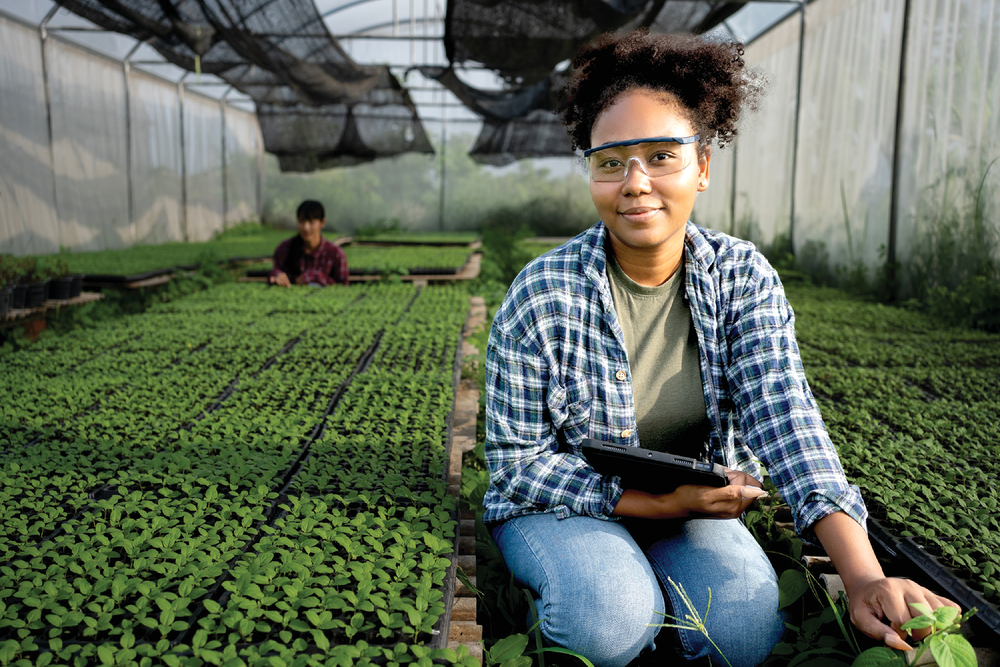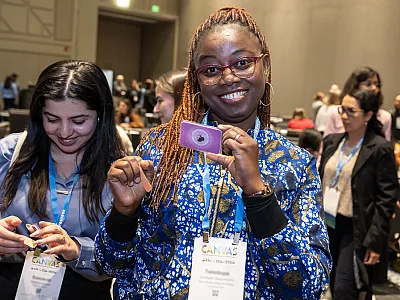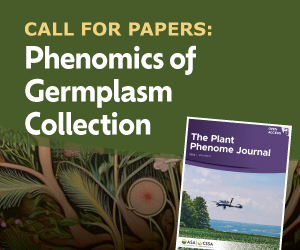Planting Seeds for the Profession of Agronomy

Greetings! The spring planting season is upon us in the Northern Hemisphere, one of the busiest times of year for agronomists. At the moment, you may be preparing to plant, be in the midst of planting, or have completed your seeding. Every spring brings a renewed sense of hope and optimism. May all the seeds you planted take root, sprout, and grow the best crop ever!
Agronomists see the tangible value of planting seeds to produce the food, fiber, and fuel crops for our communities and nations. However, given the landscape of our discipline, “planting seeds” also seems an appropriate metaphor for scouring our communities and our classrooms to transform the nascent potential of our youth into a strong and resilient workforce that matches the emerging needs of our world and our communities.
Quite frankly, we have a significant challenge ahead. Agronomy degree programs are receiving fewer applicants. Our universities are dealing with the attrition of faculty. We are seeing fewer agronomic scientists and technicians in academia, industry, and government positions.
This trend extends to farming as well. The U.S. Census of Agriculture reports that the average age of farmers has been rising for the past four decades, from 50.3 years for the “principal operator” in the 1978 census to 59.4 years in 2017. This is not just a U.S. phenomenon; it’s consistent with what is happening around the globe. For example, in Japan, the average age of persons engaged in farming in Japan was 67.8 years in 2020, up from 66.2 years in 2010.
Clearly, the world’s farmers are growing older.
Are these statistics cause for concern? Will there be enough people to grow our food in the future? What does it mean for the future of our profession of agronomy?
Positioning Agronomy as Noble, Desirable Profession
ASA strives to “plant seeds” for the continued development of agronomy as a noble and desirable profession. We are proud to support two great programs that can make a difference for young agronomists. The Greenfield Scholars program is one way that we attract students from around the world in an associate- or bachelor-degree programs toward careers in agronomy. These promising young agronomists are paired with mentors who are Certified Crop Advisers (CCAs). They are thus encouraged to pursue the CCA/Certified Professional Agronomist (CPAg) professional certification. We also strongly endorse the Golden Opportunity Scholars who are matched with a mentor having similar interests and career goals. We are always looking for established ASA members to volunteer as mentors in this capacity as it often changes the career trajectory of the young professionals they mentor.
Partnering with trusted organizations like 4-H and the Future Farmers of America is another way that ASA intends to reach youth who are already keen on becoming leaders and pursuing careers in the agricultural sciences, agri-business, and emerging agricultural technologies. Given the vast popularity of these youth organizations, with around 1 million members in the continental U.S. and associated territories, we are keen to offer the future agronomists in these groups a special opportunity to connect with ASA. This will be a priority for sustaining and growing our ASA membership in the future.
ASA can also support an expanded notion of what it means to be an agronomist—and who can do it.
Agronomy today is a sophisticated, high-tech business that is vital to our economy, representing 10.5% of total U.S. employment. Still, it is a different industry than in the past with a greater emphasis on the environment and sustainability. The value of agricultural land has never been higher, thanks to the widespread acceptance of carbon farming as a means of sequestering carbon and reducing greenhouse gas emissions. The co-benefits that are shared between farms and society are foremost in all of our minds. The incredible advances in digital agriculture in the past decade have led many agronomists to retool their information technology skills to keep up with the latest developments.
This is not your grandparents’ idea of agronomy.
Meeting the Needs of the Next Generation of Agronomists
Looking again at the U.S. Census of Agriculture, it is noteworthy to see the entry of young producers—age 35 or younger—into the profession. These individuals account for 9% of farmers. Another interesting category is the “new and beginning producers” with 10 years or less of experience in agriculture. These individuals tend to have small landholdings (on average, 120 acres, which is about four times smaller than the average U.S. farm size). However, nearly 27% of farmers are categorized as new and beginning producers. Many of these individuals worked in other industries—often completely unrelated to agriculture—before they purchased land and began their agronomy career. We are considering how to attract people who have come to agronomy through a non-traditional path to join us in ASA.
ASA must continue to evolve and pivot to meet the changing needs in our profession and to bring the future workers and scientists into the field.
ASA wishes to place workforce development as a pillar of our next strategic plan, which will be developed through consultation with members, communities, divisions, and partners within and outside of the Societies. ASA must continue to evolve and pivot to meet the changing needs in our profession and to bring the future workers and scientists into the field. As the professional home to agronomists who work across the ideas-to-innovation spectrum, we are very well positioned to continue to deliver the practical, applied knowledge about advanced technologies to our ASA colleagues. Thus, we intend to prioritize workforce development to help current, as well as future, ASA members meet the demands of highly skilled positions in agronomy.
Have you got a “seed to plant” with respect to workforce development? Please do not hesitate to contact me and the other members of your ASA Board of Directors, as well as your section and community leaders, with your ideas, stories, comments, questions, and concerns. We look forward to hearing from you!
Text © . The authors. CC BY-NC-ND 4.0. Except where otherwise noted, images are subject to copyright. Any reuse without express permission from the copyright owner is prohibited.











